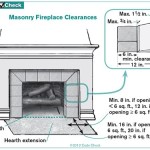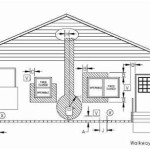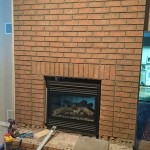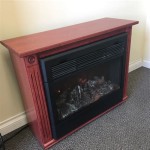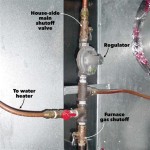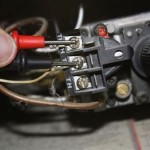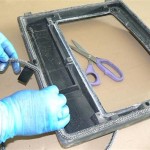Fixing a Gas Fireplace Igniter: A Comprehensive Guide
A gas fireplace offers a convenient and efficient way to add warmth and ambiance to a home. However, a malfunctioning igniter can render the fireplace unusable, leading to frustration and discomfort, especially during colder months. Understanding the common causes of igniter failure and the steps involved in troubleshooting and repair is crucial for maintaining a functioning gas fireplace. This article provides a detailed guide to diagnosing and resolving issues with gas fireplace igniters.
Before attempting any repairs, it is imperative to prioritize safety. Always ensure the gas supply to the fireplace is completely shut off. This usually involves locating the gas valve, typically found near the fireplace or in the basement, and turning it to the "off" position. It is also advisable to disconnect the electrical power to the fireplace by switching off the corresponding breaker in the electrical panel. Allow sufficient time for the fireplace to cool down before commencing any work. Wearing appropriate safety glasses and gloves is recommended throughout the process.
Understanding Gas Fireplace Igniter Types
Gas fireplaces utilize different types of igniters to initiate the combustion process. The most common types include:
*Piezo Igniters:
These igniters rely on a mechanical action to generate a spark. Pressing a button or turning a knob compresses a piezoelectric crystal, which produces a high-voltage spark that ignites the pilot light. They are known for their simplicity and independence from external power sources. Failures typically involve a malfunctioning piezoelectric element, a broken button or knob mechanism, or a dirty or misaligned spark electrode. *Hot Surface Igniters:
Hot surface igniters (HSI) are electrically powered devices that heat up a ceramic or silicon carbide element to a high temperature, sufficient to ignite the gas. They are commonly used in newer gas fireplaces and offer a more reliable and consistent ignition compared to piezo igniters. Common issues include a burnt-out heating element, a faulty igniter control module, or wiring problems. *Spark Igniters (Electronic Igniters):
These igniters use an electronic control module to generate a series of sparks across an electrode gap, similar to an automotive spark plug. They offer electronic control and can be integrated with safety features. Common failures arise from a faulty control module, a cracked or dirty electrode, or damaged wiring. They often require a 120V AC power supply or batteries to operate.Identifying the type of igniter in the gas fireplace is the first step towards successful troubleshooting. Consult the fireplace's owner's manual or visually inspect the igniter assembly to determine the type.
Troubleshooting a Malfunctioning Igniter
When the gas fireplace fails to ignite, a systematic approach to troubleshooting is necessary. Begin by checking the most common and easily resolvable issues before moving on to more complex components.
*Gas Supply:
Ensure the main gas supply valve is fully open. If other gas appliances in the home are functioning correctly, the problem is likely isolated to the fireplace. If no gas appliances are working, there may be a broader issue with the gas supply to the house, requiring the attention of a qualified gas technician. *Pilot Light (If Applicable):
Some gas fireplaces utilize a pilot light that needs to be lit before the main burner can ignite. If the pilot light is out, try relighting it according to the manufacturer's instructions. If the pilot light repeatedly goes out, there may be a problem with the thermocouple or thermopile, which are safety devices that sense the presence of the pilot flame and allow gas to flow to the main burner. A dirty or faulty thermocouple or thermopile should be cleaned or replaced. *Power Supply:
If the fireplace uses an electronic igniter or hot surface igniter, ensure it is receiving power. Check the circuit breaker to confirm it has not tripped. Inspect the wiring connections to the igniter and control module for any loose or damaged wires. If the fireplace uses a battery-powered igniter, replace the batteries and ensure they are installed correctly. *Igniter Electrode:
For piezo igniters and spark igniters, inspect the electrode for dirt, corrosion, or cracks. Clean the electrode with a fine-grit sandpaper or a wire brush. Ensure the electrode is properly positioned relative to the gas outlet. The spark gap should be within the manufacturer's specified range, typically a few millimeters. Adjust the electrode position if necessary. *Hot Surface Igniter Element:
For hot surface igniters, visually inspect the element for any signs of damage, such as cracks, breaks, or discoloration. If the element appears damaged, it likely needs to be replaced. Use a multimeter to test the continuity of the heating element. If there is no continuity, the element is burnt out and must be replaced. *Igniter Control Module:
The igniter control module is the electronic brain that controls the ignition sequence. If the other components appear to be functioning correctly, the control module may be faulty. Testing the control module typically requires specialized knowledge and equipment. It is often best to consult a qualified technician for diagnosis and replacement of the control module.Replacing a Gas Fireplace Igniter
If the igniter is determined to be faulty, replacement is often the most effective solution. The replacement process varies depending on the type of igniter and the specific fireplace model. However, the following general steps apply:
1.Acquire the Correct Replacement Igniter:
Obtain a replacement igniter that is specifically designed for the gas fireplace model. Consult the owner's manual or contact the manufacturer to determine the correct part number. Using an incompatible igniter can lead to unsafe operation and potential damage to the fireplace. 2.Disconnect Power and Gas Supply:
As mentioned previously, ensure the gas supply and electrical power to the fireplace are completely shut off before proceeding. 3.Access the Igniter:
Locate the igniter assembly within the fireplace. This may involve removing the fireplace logs, decorative panels, or the front panel. Refer to the owner's manual for specific instructions on accessing the igniter. 4.Disconnect the Old Igniter:
Carefully disconnect the electrical wiring from the old igniter. Take note of the wiring connections to ensure proper reconnection of the new igniter. For piezo igniters, disconnect the mechanical linkage from the button or knob. 5.Remove the Old Igniter:
Remove the old igniter from its mounting bracket or housing. This may involve unscrewing a fastener or releasing a clip. 6.Install the New Igniter:
Install the new igniter into the mounting bracket or housing, ensuring it is securely fastened. Connect the electrical wiring to the new igniter, matching the connections from the old igniter. For piezo igniters, connect the mechanical linkage to the button or knob. 7.Reassemble the Fireplace:
Reassemble the fireplace by replacing the logs, decorative panels, or front panel. Ensure all components are properly positioned and secured. 8.Test the New Igniter:
Turn on the gas supply and electrical power to the fireplace. Test the new igniter by attempting to ignite the pilot light or main burner. If the igniter fails to function, double-check the wiring connections and the gas supply. If the problem persists, consult a qualified technician.Preventative Maintenance for Gas Fireplace Igniters
Regular maintenance can help prevent igniter failures and extend the lifespan of the gas fireplace. The following preventative measures are recommended:
*Annual Cleaning:
Clean the fireplace annually to remove dust, debris, and soot. This includes cleaning the burner assembly, the pilot light assembly, and the igniter electrode. Use a soft brush or vacuum cleaner to remove loose debris. A specialized fireplace cleaner can be used to remove stubborn soot deposits. *Inspect Wiring and Connections:
Periodically inspect the wiring and connections to the igniter and control module for any signs of damage, corrosion, or looseness. Tighten any loose connections and replace any damaged wires. *Check Gas Pressure:
Ensure the gas pressure to the fireplace is within the manufacturer's specified range. Low gas pressure can lead to ignition problems. A qualified gas technician can check and adjust the gas pressure if necessary. *Professional Servicing:
Schedule a professional inspection and servicing of the gas fireplace every one to two years. A qualified technician can identify and address potential problems before they lead to failures.By understanding the different types of gas fireplace igniters, following a systematic troubleshooting process, and performing regular maintenance, homeowners can effectively address igniter problems and ensure the reliable operation of their gas fireplaces.

Gas Fireplace Repair Won T Work Start Or Light Piezo Ignitor Spark Igniter

Gas Fireplace Won T Stay Lit Magic Touch Mechanical

Identifying Gas Fireplace Parts Www Mygasfireplacerepair Com

Reasons Your Gas Fireplace Isn T Working Experts

Gas Fireplace Won T Stay Lit Magic Touch Mechanical

How To Fix A Gas Fire Igniter

5 Reasons Gas Fireplaces Won T Light How To Fix It Fireplace Tips
How To Fix A Gas Fireplace That Won T Light Reliably When It Is Operated By Switch On The Wall Quora

Using A Gas Fireplace During Power Outage Answered Tips

How To Fix A Spark Igniter In Gas Fireplace All Valley Repair
Related Posts

